The Adventures of Lawan, Dog of a Thousand Names
Reblogging from Neon Observatory:
The Adventures of Lawan, Dog of a Thousand Names
Reblogging from Neon Observatory:
Bush-Clinton Mafia Dynasties Merry-Go-Round
 Gilbert Mercier | NEWS JUNKIE POST
Gilbert Mercier | NEWS JUNKIE POST
First iteration: Mar 13, 2015
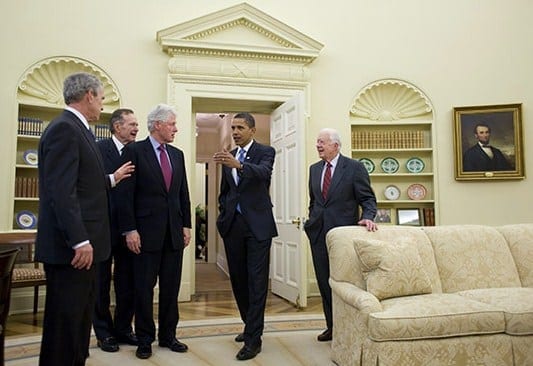
Obama with former Presidents Bush (41), Carter and Clinton at the Wh ite House on Jan. 7, 2009.
(Photo by Pete Souza)
[dropcap]I[/dropcap]f a space or a time traveler would set his time ship’s dial to 2015, with the United States as its destination, one could think that a mandatory preparation for the journey to understand the US’ political system would be an attentive study of the Constitution. After all, the document, drafted in 1787 by the so-called founding fathers and finally ratified three years later in 1790 in its original form, is supposed to be the foundation of the US’ political edifice.
…
Two hundred and twenty-five years later, the document has been so thoroughly gutted of its substantial original merits, at least in its spirit if not its letter, that the foundation of the building has become a superfluous architectural ornament. While the US Constitution was far from being revolutionary and granted equal rights only to white male landowners, it marked, in conjunction with the French revolution of 1789, a resolute break from the European kingdoms. No king or queen could ever claim this land again, under any circumstance. A republic, ruled by a meritocracy of well-educated Anglo-Saxon patrician men, was born. Since 190 years after the US Constitution’s ratification, however, which is exactly since 1980, the country has been ruled by two dynasties or their surrogates: the Bushes and the Clintons.
American royal mafia and co: organized crime as political model
To understand the undemocratic and extremely seedy side of US modern-day politics, it would be imperative for our time traveler, de Tocqueville in training, to watch two classics of American cinema: “The Godfather” and “The Godfather Part II”. Director Francis Ford Coppola, in his fictional, yet extremely well-researched and documented films, invited us inside the US’ underbelly. During the 19th century and up to the early 20th century, massive numbers of poor immigrants, mainly Italians, Irish and Jews from eastern Europe, were lured to the Americas largely to escape economic hardship. Those who landed in the US quickly understood that they were excluded from or at best marginalized in this promised land run by white Anglo-Saxon Protestants. The more ambitious ones, unencumbered by moral boundaries, developed their own form of government and social code of conduct in the form of a tightly knit family-like structure that usually strictly followed ethnic lines. The birth of organized crime in the US, either Italian, Jewish or Irish, was a direct consequence of the fight for survival of communities that were deliberately excluded from power or even any political discourse.
Mafia families had a strictly enforced code of conduct and precise hierarchy, with a don (boss) at the top; a consiglierie (adviser to the head of the family) directly picked by the don; an under boss who was usually groomed to be the don’s successor; capos (the lieutenants), and “soldiers”. In the 1930s, under the supervision of Lucky Luciano, the don of all dons, not only the five Italian mafia families worked together, but they also collaborated on many occasions with the Jewish and Irish mafia. In this parallel brand of power and economy, mafia families extracted contributions (a primitive form of taxation of usually 10 percent of income) from businesses, ironically to protect them from random criminal activity. By the mid-1930s mafia families controlled large sections of the US economy. The prohibition of alcoholic beverages, which spanned from 1920 to 1933, marked the apogee of the mafia families, either Italian, Jewish or Irish. The mob controlled the flow of liquor, and Americans were thirsty.
[dropcap]D[/dropcap]uring the prohibition era, Joe Kennedy (father of John F. Kennedy and Robert F. Kennedy), the patriarch of a family that passed for being true US aristocracy although he had been the grandson of a dirt-poor potato-famine Irish immigrant, substantially increased his vast fortune by importing, from the UK and Canada, and selling illicit liquor in association with Italian-American don Frank Costello and Jewish gangster Meyer Lansky. Joe Kennedy had an edge on the competition: he went into the prohibition era in 1920 with large stocks of booze from his father’s own stores. In what cannot be a coincidence, on the day prohibition ended 13 years later, Joe Kennedy had three exclusive deals to import British whiskey and gin, as well as an extensive network of retailers already in place. Kennedy understood that his political ambitions for his sons would require vast amounts of money. Like any mafia bosses, don Joe Kennedy wanted to start a dynasty at any cost and regardless of moral or even legal considerations. In the US, money meant power, and this notion was the motto for both supposed blue-blood patriarch Kennedy and don Lucky Luciano.
Bush mafia vs Clinton mafia: Defining US politics from 1980 to 2016
Arguably, the first term of George H. Bush, founder of the Bush dynasty, started in 1980 when he officially became Vice President or, to use the mafia term, super under boss to Ronald Reagan, an aging actor, perhaps already senile, hired to perform the role of global don: “Leader of the free world” and most powerful man on earth, according to US mainstream media propaganda. Bush Sr. had previously run the Central Intelligence Agency. During the two terms of the Reagan administration (1980 to 1988), it was common knowledge that Bush Sr was the boss who led US policy. He officially became the don in 1988, and ran his own operation with pretty much the same crew until 1992. James Baker was the key consigliere to don Bush Sr, but he also listened closely to the Talleyrand of US politics, consigliere extraordinaire Henry Kissinger. Bush Sr’s under boss was Donald Rumsfeld who picked his capo in the person of Dick Cheney. George W. Bush or Bush Jr, when his turn came, kept most of the old don’s crew with some minor changes and additions. Cheney became the under boss, while Rumsfeld took the vital Pentagon portfolio.
[dropcap]B[/dropcap]efore George W. Bush’s turn, the Clinton dynasty came along in 1992, courtesy of WalMart, and with the firm intention, as an obligation to their sponsors, to facilitate a global corporate imperialist agenda. With the North American Free Trade Agreement (NAFTA), don Bill Clinton went the extra mile for the benefit of his friends in transnational corporations. Bill Clinton became a favorite of Wall Street’s investment banks, such as Goldman Sachs, by being instrumental in the repeal of the Glass-Steagall Act which was voted in 1933 during the Great Depression in the aftermath of the 1929 Wall Street crash. The Glass-Steagall Act limited commercial banks securities activities, and it clearly separated commercial banking from investment banking, to curtail speculation. The repeal of this Act allowed Wall Street investment banks to gamble money that was held in commercial banks, and this was arguably one of the lead systemic factors in the 2008 global financial-market crash.
Don Clinton’s consigliere was mainly first-lady Hillary, but he also took the advice of the other super-consigliere besides Kissinger: Polish-born Zbigniew Brzezinski. Consigliere Brzezinski started his career in 1966 when he advised Lyndon B. Johnson. He returned in the late 1970s to advise Jimmy Carter. When he was Carter’s consigliere, Brzezinski came up with the idea to finance and arm the Mujahideen in Afghanistan to fight the Soviet Union. Don Clinton’s under boss was Leon Panetta, and the lead capo was Rahm Emanuel. When dona Hillary Clinton lost what she viewed as being her turn in the driver’s seat, both the Clinton and Bush mafias made sure that young capo Barack Obama, who had not patiently waited for his turn in the limelight, was surrounded by trusted hands. One can imagine the deal imposed on Obama by Bill and Dick. The Bush mafia would keep the Pentagon for the time being; Hillary would run US foreign policy from the State Department; don Bill’s under boss Leon Panetta would become Obama’s CIA director (2009 to 2011) and boss of the Pentagon (2011 to 2013). Clinton’s trusted lead capo Rahm Emanuel became Obama’s under boss. Don Bill did not stay idle after the 2008 election; he became Obama’s lead consigliere, with the occasional help on geopolitical dossiers such as Ukraine from… Brzezinski, of course. The 88-year-old anti-Russian Democrat uber-consigliere’s latest contribution has been to bring back the Cold War into international affairs. Bill Clinton’s main task was to replenish the family coffers through the Clinton Global Initiative, a fund raising operation disguised as being humanitarian. After the 2010 earthquake, Haiti became don Bill’s pet project and personal fiefdom.
Is there anyway off this sinister merry go round?
By now, our time-traveler hero realizes that the premise of the upcoming 2016 US presidential election “fight” is already set. It will be a rematch of an old time classic: Bush against Clinton, dona Hillary versus don Jeb. For good measure, and to give American consumers of elections a sense that their democracy is not an illusion, there will be unelectable challengers in the fake primaries. This will be strictly for entertainment purposes and to indulge the so-called American left. On a short list of likely seat warmers for Hillary are Elizabeth Warren, Bernie Sanders, perhaps even Joe Biden. On the Bush side of the ring, the supposed primary challengers will be harder to find: perhaps Mitt Romney again or phony Libertarian Rand Paul. But let us listen to what consigliere extraordinaire Henry Kissinger recently said on the issue; after all, he has advised more US presidents than anyone else alive. In a September 6, 2014 interview with NPR‘s Scott Simon, when asked if Hillary Clinton would make a good president, Kissinger said: “I know Hillary as a person, and as a personal friend. I would say, yes she would be a good president. But that would put me under a great conflict of interest if she were a candidate, because I intend to support the Republicans…. Yes I would be comfortable with her as a president.” Our time traveler, de Tocqueville in training, is dazed, confused and disgusted by what the US has grown into: the sort of charade that notions like democracy, the common good and morality have become in this display of vile and raw power for power’s sake.
Editor’s Notes: Photographs one, five and seven from the archive of the Obama-Biden Transition Project; photograph four from the White House archive; photograph six by David Shankbone; photograph eight from the US Department of State archive.
SELECT COMMENTS
-
It would appear, based on the premise of this article, that it makes little difference who “wins” the 2016 election. “The fix is in” is the rule of the day. Meanwhile, the citizenry, apathetic due to indulgence in “wine and circuses”… six pack and football games… meanders through their lives, their taxes and spending on unnecessary crap funding the lives of the gangs running the show. For those who believe in evolution, this would be a validation of “survival of the fittest” (in this case, most clever and sinister).
[printfriendly]
Remember: All captions and pullquotes are furnished by the editors, NOT the author(s).
What is $5 a month to support one of the greatest publications on the Left?
The Pope’s Ecological Vow
OP-ED CONTRIBUTOR
The Pope’s Ecological Vow
 (NOTE: The above image does NOT accompany the NYT’s article.—Eds.)
(NOTE: The above image does NOT accompany the NYT’s article.—Eds.)
By PAUL VALLELY (JUNE 28, 2015)
[dropcap]I[/dropcap]n the days just before its publication, those involved in drafting the pope’s controversial eco-encyclical Laudato Si’ were much exercised about how it would be received by conservative critics. But Pope Francis, Vatican insiders tell me, was unfazed. He remains so in the face of the onslaught of criticism that has indeed ensued.
The pope’s acceptance that global warming is almost certainly man-made has irked the vocal minority with more skeptical views. They say Francis has overlooked the ability of technology to provide solutions to climate change. They’ve upbraided him for ignoring the role of free markets in lifting millions out of poverty. They’ve criticized his dismissal of birth control as the answer to an overcrowded planet.
The truth is that Francis saw all that coming. As the dust settles, after the whirlwind that accompanied its publication, closer examination of the encyclical reveals that the pope implanted within it strategies to rebut these attacks. Laudato Si’ turns out to be one of the shrewdest documents issued by the Vatican during the past century. It has revealed Francis as a wily and sophisticated politician of the first order.
Francis learned a lesson from the American conservatives who branded his previous papal manifesto, Evangelii Gaudium, as Marxist. His eco-encyclical contains a raft of defenses against critics who dismiss it as the work of some kind of left-wing maverick.
The document takes its inspiration, like its name, from the writings of Francis of Assisi. The 13th-century saint, like his 21st-century namesake, combined a love for the poor, for peace and for nature. But if the saint’s theology was new, the pope’s is traditional. Moreover, he has taken care to locate his text firmly in the substantial body of teaching set out by previous popes, including two beloved by American conservatives, John Paul II and Benedict XVI.
Francis also made a point — highly unusually — of referencing the pioneering eco-theology of the Orthodox Church, as well as citing no fewer than 18 teaching documents from Catholic bishops’ conferences around the world. All this demonstrated his acute awareness of the importance of alliance-building on such a major issue. You are not, he was telling critics, dealing with just one man here.
He took similar care over the science. The pope should stick to religion and leave science to the scientists, said one conservative, the Republican presidential candidate Rick Santorum, in one of a wave of “prebuttal” remarks as the encyclical was being finalized. That is exactly what Francis did in accepting the view of the 97 percent of actively-publishing climate scientists who say human activity is a major contributor to global warming. The pope’s political acumen was also clear from the way he timed the encyclical to target the three United Nations summits on financial aid, sustainable development and climate change later this year.
But there is something more profoundly subversive about Laudato Si’ than what it says on climate change. On the day it was published, the pope privately told his closest advisers in Rome that the encyclical was not really an environmental document at all. Global warming is merely a symptom of a deeper malaise.
The real problem, he insists, is the myopic mentality that has failed to address climate change to date. The rich world’s indifference to the despoliation of the environment in pursuit of short-term economic gain is rooted in a wider problem. Market economics has taught us that the world is a resource to be manipulated for our gain.
This has led us into unjust and exploitative economic systems that support what Francis calls “a throwaway culture,” one that treats not just unwanted things but also unwanted people — the poor, the elderly and the unborn — as waste.
Capitalism may maximize our choices, he observes, but it offers no guidance on how we should choose. Insatiable consumerism has blinkered our vision and left us unable to distinguish between what we need and what we merely want.
It is in this analysis that the pope’s replies to his conservative critics lie. Capitalism may have lifted millions out of poverty, but it has done so at a huge cost. That is shown by the catastrophic air pollution in China, which has replaced the United States as the world’s biggest emitter of greenhouse gases. Worse than that, poorly regulated capitalism in the global south has left behind millions more — the weakest and poorest.
Technological solutions often just change the problem without truly solving it, the pope says. His critics have countered that gas from fracking is less polluting than burning coal. But that is like advocating dieting by eating reduced-fat cookies. Carbon-trading, Francis says, may just encourage speculation — and continued overconsumption.
Population is likewise a red herring, he insists. Poor people make hardly any contribution to global warming, according to one of the pope’s chief science advisers, Hans Joachim Schellnhuber of the Potsdam Institute for Climate Impact Research. A 10 percent cut in emissions by rich nations, he says, would be far more effective in combatting global warming than any birth control program.
In all this, the market has tricked us into confusing technological advance with progress. It has reduced our politics to a maximization of our individual freedom and choice. We have forgotten the common good as we have our common home, the earth.
Francis is saying that the environmental crisis is really a crisis in laissez-faire capitalism. And he is saying that the answer is a profound change at all levels — political, economic, social, communal, familial and personal. This is not Marxist, for it lacks a materialist view of history. But it is revolutionary — and deeply disturbing to those with a vested interest in the status quo.
Previous popes have spoken out boldly on environmental degradation. but it was mainly a side issue. For Francis it is central. He is the first pope from the global south, and from the outset he called for “a poor Church for the poor.” He is unafraid to rebuke the world’s politicians for “weak” leadership. But he also gets into the nitty-gritty detail to tell ordinary Catholics to use less heating and air conditioning, sort and recycle garbage, use buses or car-shares, and turn off unnecessary lights.
Ecologists have been saying all that for decades, but Francis is delving to a deeper level in the human psyche. Such “simple daily gestures,” he says, will “break with the logic of violence, exploitation and selfishness.” He asks “every person living on this planet” to stand before God, or our own consciences, and be honest with ourselves about the consumerist lifestyle to which so many of us are in thrall.
Francis knows that if the consciences of ordinary Catholics can be pricked, they may begin to adjust their life choices — and that could create pressure for political action. Climate change skeptics may well find that in Francis they have met their most formidable opponent.
[box type=”bio”] Paul Vallely is visiting professor of public ethics at the University of Chester and the author of the forthcoming book “Pope Francis — The Struggle for the Soul of Catholicism.”[/box]
[printfriendly]
Remember: All captions and pullquotes are furnished by the editors, NOT the author(s).
What is $5 a month to support one of the greatest publications on the Left?


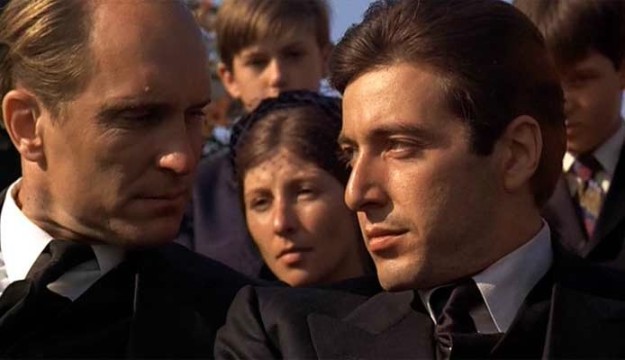
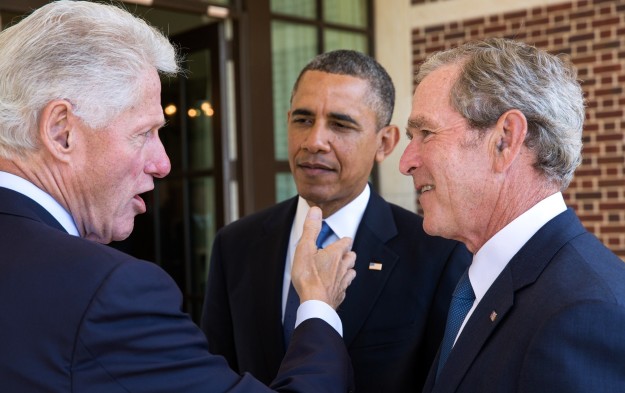
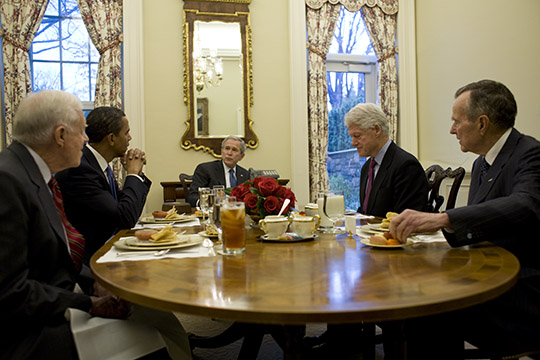
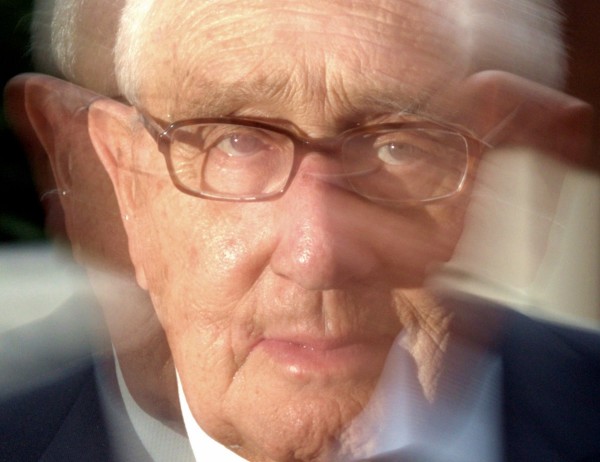
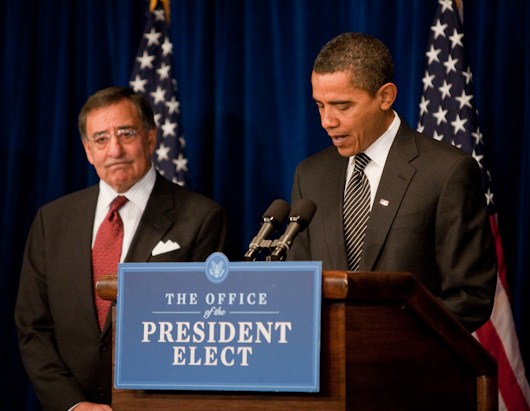
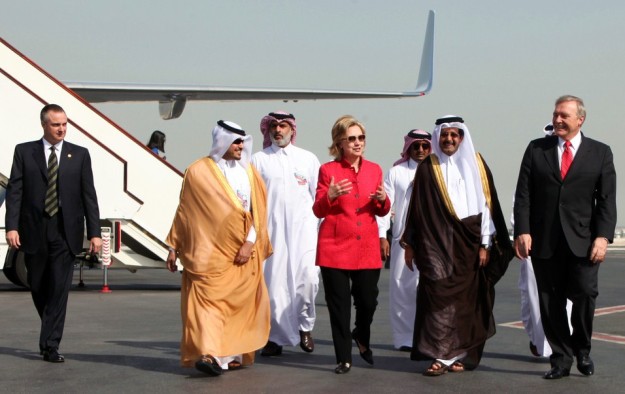
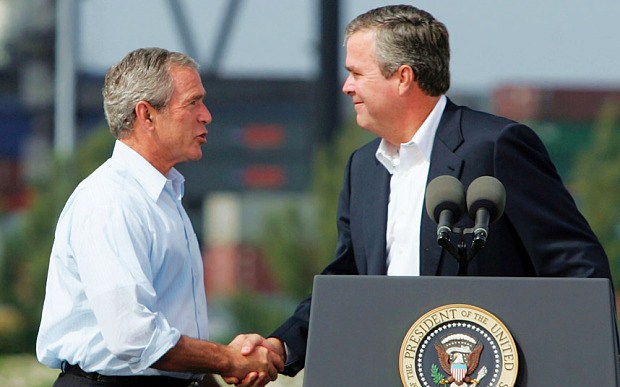


+3
 Kraut77 March 18, 2015 at 11:49 am
Kraut77 March 18, 2015 at 11:49 am
“The big pie that is alledgedly there to be distributed expresses the change in consciousness. Because people regard the world as loot they organize into gangs. And because “everybody does it” the borders between influence, coercion and open violence dissolve.”